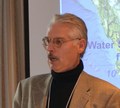ARTICLE: Getting the Most from Infrastructure Assets: The idea of ecological accounting (published in Asset Management BC Newsletter, Winter 2016)

Tim Pringle coined the phrase ecological accounting protocol. “The purpose is to enable comparison of engineered infrastructure to natural systems by means of common units of measurement and value,” states Tim Pringle. “The challenge is in HOW to calculate the most effective blend of services from nature and engineered infrastructure. The need for measurement and valuation is paramount.”










 “We are using the slogan The New Business As Usual to convey the message that, for change to really occur, practices that until now have been viewed as the exception must become the norm moving forward. We have to build regulatory models and develop models of practice and expertise,” stated Dale Wall, Deputy Minister
“We are using the slogan The New Business As Usual to convey the message that, for change to really occur, practices that until now have been viewed as the exception must become the norm moving forward. We have to build regulatory models and develop models of practice and expertise,” stated Dale Wall, Deputy Minister